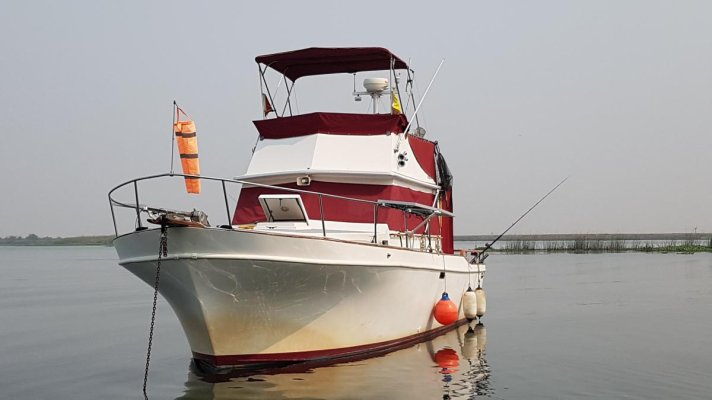I haven't read all the responses. I will give you my ideal boat which amazingly enough... lol ..., just happens to resemble my boat. Be aware I just finished a multi-hundred thousand refit.
So I will just describe - TO ME - the perfect PNW and coastal BC boat.
1. The boat has hydronic heating which also heats your hot water as well as the boat. You don't need a hot water tank tied into your boat engine, nice but not necessary. When you show up to your boat to depart, turn the hot water tank (AC selection) on to heat water before you leave the dock. With the small tank you will have that can be done amazingly quickly - 15 to 20 minutes. When on the hook, that same tank takes its heat from the hydronic heater. Note: I got Espar but I think Hurricane might be better, check that claim out.
2. A cockpit with either a hard or soft bimini (I prefer hard, I have soft). The top of the bimini, especially a hard one is a great place for solar power. Soft walls that can roll down, this is good for the rain we get in our respective areas. And if you head into the Broughtons and Alaska (the plague will leave), it get colder and rainier even in summer. And a statistic I still find hard to believe, but Ketchican has more rain in July than Seattle does in November, now that's saying something. So in those wretched rain periods (you are going to use your boat in the off season, aren't you?) you can sip the champagne in the cockpit and contemplate how great life is.
My buddy just bought a NT 32 about a month and half ago so I've been on it twice. The cockpit area is small but still worth it to have extra livable space.
3. Get batteries, either lithium or fireflies that provide a deeper discharge rate, can stand abuse and neglect, charge fast and will last a long time. I have 6 fireflies that provides 700 amp of power at full discharge, and 560 amps to 20 % discharge (you can do that with these two types of batteries).
4. Add solar, don't bother asking how much, add as much as you can. No one has ever been heard to say they wish they hadn't added as much solar as they did. My refit guy disappointed me in this regard. My panels are three 100 watts but the space could easily handled three 150 watts.
5. No generator, you don't need one as long as you don't add big ticket electrical appliances or a jacuzzi. On the hook you can still use a toaster, microwave, hair blower (set on medium heat and medium blow).
6. Higher amp alternator - 140 to 200 amps. Or add a second one.
7. Efoy. There are three levels of Efoy - 80, 140, 210. Efoy is a methanol fuel cell. The best way to understand a fuel cell on your boat is this - imagine you have a solar panel system that works in the dark, in the light, under all conditions for 24 hours a day if you want. I have the Efoy 210 and it puts out slight lower than 8 amps an hour for as long as I leave it on, or just turn it on in certain situations, which is what I do. You won't use the Efoy unit much during the summer but as you head into off season with lots of cloud, you will use it much more. And power draw goes up in the off season, fans on your hydronic heater for example so your fuel cell is helpful then.
8. Dual system for running your boat. So I have a two burner Force 10 stove/oven that runs on propane. And of course a BBQ. So when the boat is on the hook in off season, I run the propane stove and BBQ. I run the hydronic heater to heat the cabin and hot water.
I also have a small convection oven and induction plate. When I'm at a marina, the Scottish comes out in me and I want to use the power I paid for, so I cook with the convection oven or BBQ, and induction cooking. Use the propane when I need to, don't use the propane when I don't need to.
In the above scenarios of batteries, fuel cell, solar and alternator, you can use the microwave (I do for about 5 minutes a day), toaster (I do for about 6 minutes a day), TV (I only watch DVD's, but my 28 inch tv is 50 watts), and lights etc. on the hook and can generate enough amps every day to be out for a long time on the hook.

